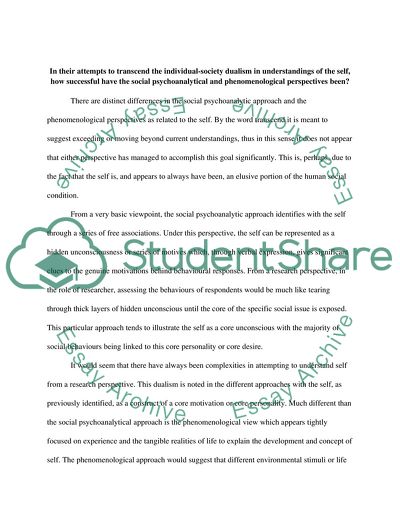Cite this document
(Attempts to Transcend the Individual-Society Dualism in Understandings Coursework, n.d.)
Attempts to Transcend the Individual-Society Dualism in Understandings Coursework. Retrieved from https://studentshare.org/psychology/1721974-in-their-attempts-to-transcend-the-individual-society-dualism-in-understandings-of-the-self-how-successful-have-the-social-psychoanalytic-and-phenomenological-perspectives-been
Attempts to Transcend the Individual-Society Dualism in Understandings Coursework. Retrieved from https://studentshare.org/psychology/1721974-in-their-attempts-to-transcend-the-individual-society-dualism-in-understandings-of-the-self-how-successful-have-the-social-psychoanalytic-and-phenomenological-perspectives-been
(Attempts to Transcend the Individual-Society Dualism in Understandings Coursework)
Attempts to Transcend the Individual-Society Dualism in Understandings Coursework. https://studentshare.org/psychology/1721974-in-their-attempts-to-transcend-the-individual-society-dualism-in-understandings-of-the-self-how-successful-have-the-social-psychoanalytic-and-phenomenological-perspectives-been.
Attempts to Transcend the Individual-Society Dualism in Understandings Coursework. https://studentshare.org/psychology/1721974-in-their-attempts-to-transcend-the-individual-society-dualism-in-understandings-of-the-self-how-successful-have-the-social-psychoanalytic-and-phenomenological-perspectives-been.
“Attempts to Transcend the Individual-Society Dualism in Understandings Coursework”. https://studentshare.org/psychology/1721974-in-their-attempts-to-transcend-the-individual-society-dualism-in-understandings-of-the-self-how-successful-have-the-social-psychoanalytic-and-phenomenological-perspectives-been.


